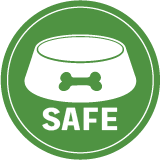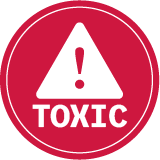Those Little Tear Tracks? Here's What They Really Mean
There are several contributing factors behind tear staining in dogs. While some causes are benign, others may require veterinary intervention.

STORY AT-A-GLANCE
- Tear stains are most visible in white or light-colored dogs and are caused by iron-rich molecules called porphyrins that discolor fur when tears spill onto the face
- Facial structure plays a major role in staining; breeds with short noses and prominent eyes often experience poor tear drainage due to inefficient nasolacrimal ducts
- Tear staining may result from blocked tear ducts, excessive tear production, or underlying infections — conditions that require veterinary evaluation for proper diagnosis and care
- Persistent tear stains can lead to secondary skin infections, discomfort, and foul odors, especially when the fur remains damp and uncleaned around the eyes
- Daily eye-area cleaning, trimmed facial hair, balanced nutrition, and veterinarian-approved supplements can help minimize tear stains and improve your dog's comfort and overall hygiene
If you have ever noticed reddish-brown streaks under your dog's eyes, you are not alone. These marks, commonly referred to as tear stains, are a frequent concern among pet parents, especially those with white or light-colored dogs.
While tear staining is often dismissed as merely a cosmetic flaw, it can sometimes point to deeper issues that deserve your attention. Understanding the causes, prevention strategies, and treatment options for tear staining is key to safeguarding your dog's health and comfort.
What Are Tear Stains in Dogs?
Tear stains appear as dark, rust-colored tracks beneath the inner corners of your dog’s eyes. These streaks are typically more noticeable in breeds with white or cream-colored fur, but they can affect dogs of any coat color. While the stained fur itself is not painful, the tear-stained tracts may be associated with discomfort, irritation, or other underlying health concerns.
The distinctive reddish-brown hue of tear stains is caused by a substance called porphyrin. Porphyrins are iron-containing molecules produced when the body breaks down red blood cells. In dogs, these molecules are excreted primarily in bile and then out through the digestive tract, but can also be excreted in other bodily fluids including saliva, urine, and tears. When porphyrin-rich tears come into contact with your dog's fur and are exposed to air, they oxidize — resulting in the discoloration you see.1
Why Do Tear Stains Develop?
It is important to understand that tear staining is not commonly a reflection of poor hygiene, neglect, or a medical problem; in many cases, it is simply related to your dog's unique anatomy or genetic background. Here are some possible factors that contribute to tear stain formation.2
- Facial structure — The shape and structure of a dog's face, referred to as facial conformation, plays a major role in tear drainage. Most dogs have a tear drainage system similar to humans, where tears flow from their eyes into their nose through a tiny channel known as the nasolacrimal duct.
However, in certain breeds with short noses and wide-set or prominent eyes — such as Bulldogs, Shih Tzus, Pekingese, and Pugs — this drainage system may not function as efficiently. Their tears often spill over the lower eyelid and onto the face, leading to chronic staining. This issue is not necessarily caused by disease or by over-production of tears but rather by the physical structure of the face. - Abnormal or blocked tear ducts — In some dogs, tear staining occurs due to physical obstruction or abnormality in the tear ducts. These blockages may be present from birth or could develop later due to inflammation, infection, trauma, or, in rare cases, tumors. When the tear duct is blocked or narrowed, tears have no proper outlet and instead overflow onto the face, creating ideal conditions for staining and irritation. Signs that may indicate a blocked tear duct include:
- Sudden onset of tear staining
- Watery eyes with no apparent cause
- Swelling or discharge around the eyes
Veterinary evaluation is essential in such cases to determine whether the duct can be flushed or if other interventions are needed. - Excessive tear production — Although many assume tear staining results from excessive tearing, the majority of tear-stained dogs have normal tear volume. That said, certain conditions can increase tear production, such as:
- Environmental irritants (dust, smoke, and wind)
- Allergic reactions
- Eye infections or injury
- Eyelashes or fur rubbing against the eye
- Glaucoma or other eye diseases
If your dog's eyes appear excessively moist or you notice a sudden increase in tearing, it is a good idea to consult your veterinarian for a thorough evaluation. - Eye or upper respiratory infections — Eye infections can result in a mix of watery and thick discharge that contributes to staining. Additionally, upper respiratory infections — particularly those associated with conditions like canine infectious respiratory disease complex (referred to as CIRDC or also commonly known as "kennel cough") — may include eye discharge among their symptoms. Common signs of infection include:
- Yellow or green eye discharge
- Sneezing and nasal discharge
- Lethargy
- Coughing
- Loss of appetite
These cases require immediate veterinary care, as leaving infections untreated may result in complications or discomfort for your dog.
Why You Should Not Ignore Tear Stains
While tear stains may appear harmless at first, persistent staining can lead to more than just an unkempt appearance. Constant exposure to moisture softens the skin beneath the eyes and creates a breeding ground for bacteria, which can lead to:
- Itching or discomfort
- Red, swollen skin
- Foul odor
- Infected or irritated patches of fur
Left unchecked, this cycle may develop into a chronic skin condition known as dermatitis, particularly in breeds with heavy facial folds. Regular monitoring and prompt care help ensure that a minor nuisance does not become a more serious health issue.
Which Dogs Are More Prone to Tear Stains?
Tear staining can occur in any dog, but some breeds are more predisposed than others due to physical features, coat color, or inherited traits. Commonly affected breeds include:3
- Short-nosed (brachycephalic) breeds (Pugs, Bulldogs, Boxers, Shih Tzus, and Boston Terriers)
- Light-colored or white-coated dogs (Maltese, Bichon Frise, and West Highland White Terrier)
- Long-haired breeds (Cocker Spaniels, Poodles, King Charles Cavaliers, and Schnauzers)
Other susceptible breeds include Golden Retrievers, Dachshunds, Samoyeds, and Lhasa Apsos. If your dog falls into one of these categories, staying proactive with prevention and daily care can greatly reduce the appearance and severity of tear stains.
How to Clean Tear Stains Safely
In many cases, tear stains can be managed successfully at home using gentle, consistent care. Here are the most effective strategies for safely removing existing stains and minimizing future ones.
- Trim the fur around the eyes — Long facial hair can trap moisture and create a warm, damp environment ideal for bacterial growth. Using grooming scissors to trim the hair around your dog's eyes regularly not only improves appearance but also helps reduce the risk of skin irritation and tear accumulation. If you do not know how to use grooming scissors, seek professional grooming services to prevent injuries.
- Clean your pet's face gently every day — You can use a soft, damp washcloth and a drop of dog-safe shampoo (avoid getting soap in the eyes) or cotton balls soaked in warm water. There are also pet-safe eye wipes available for purchase. When cleaning, make sure to wipe in a direction away from the eyes; do not use household cleaners or strong chemicals on your dog's face.
- Dry the area thoroughly after cleaning — Use a soft towel or clean cotton cloth to gently pat the area dry. Moisture trapped in the fur can prolong staining and increase the risk of skin infections.
When to Seek Veterinary Help
Although many tear stains are harmless and manageable at home, certain symptoms require prompt medical attention. Contact your veterinarian if you notice any of the following:
- Tear stains that appear suddenly or worsen quickly
- Eye redness, swelling, or inflammation
- Green or yellow discharge
- Discomfort or pawing at the eyes
- Sores or unpleasant odors around the stained area
Your veterinarian may recommend diagnostic testing, tear duct flushing, or referral to a veterinary ophthalmologist to assess the cause and suggest targeted treatment.
Tips to Prevent Tear Stains
While you may not be able to eliminate tear staining entirely, especially in predisposed breeds, there are proactive strategies to reduce the occurrence. Follow these tips:
- Establish a regular cleaning routine — Consistent removal of tears prevents porphyrins from setting into the fur and reduces the risk of skin irritation and bacterial overgrowth.
- Keep facial fur trimmed and neat — Short hair around the eyes not only improves cleanliness but also limits fur-to-eye contact, reducing irritation and possible scratching of the cornea.
- Ensure proper hydration and nutrition — A balanced, species-appropriate diet and clean, fresh water are essential to overall eye and skin health.
- Consider probiotics or supplements — Some veterinarians suggest probiotics to help balance gut bacteria, which may play a role in porphyrin production. Your veterinarian may also suggest eye drops containing hyaluronic acid to improve the quality of the tear film and reduce the impact of tears on the skin around the eyes.
There are also supplements marketed for tear stain reduction, though their effectiveness varies. Always discuss any supplement use with your veterinarian first and be sure to use "tylosin-free" products. Tylosin (brand name Tylan) has been banned by the FDA for over the counter use since 2014, but there may still be products in circulation containing this antibiotic, which has potential long-term risks.4
Those Little Tear Tracks Deserve Your Attention
Tear staining is a common and often manageable condition, but it should not be ignored. In some dogs, it is just a matter of facial anatomy. In others, it could be a sign of infection, blocked tear ducts, or eye irritation.
With proper care — gentle cleaning, good grooming habits, and a healthy diet — you can keep your dog’s eyes bright, comfortable, and free from stains. By staying observant and proactive, you will not only protect your pet’s appearance but also their long-term health.










